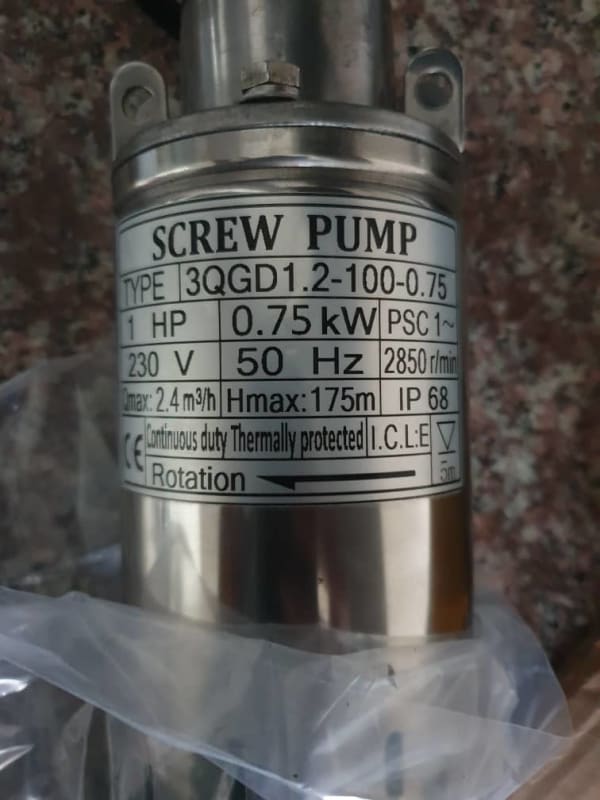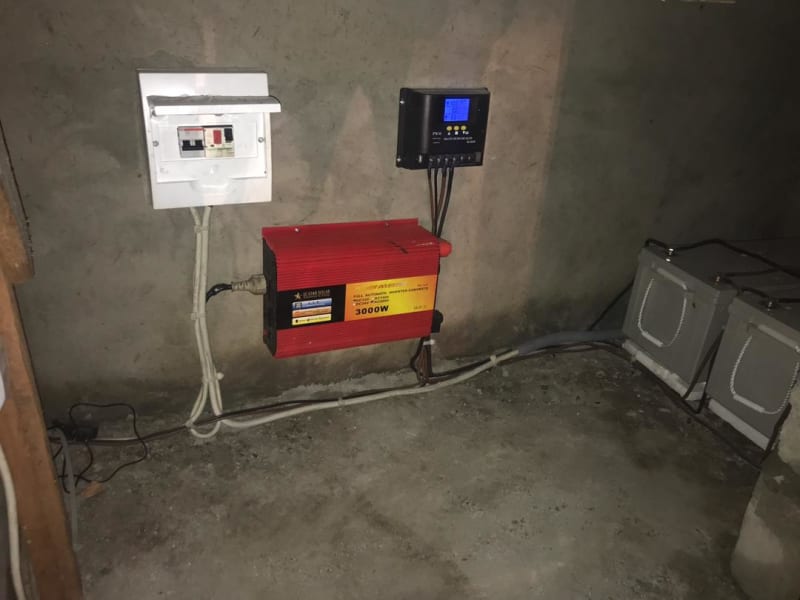Your system has failed because you provide no way to stop the pump if there is no available solar.
Further you can not just stop the pump with lack of solar you
must also shut off the inverter as it presents a considerable standby load to the DC supply (battery bank) simply sitting there ON.
To fix this you need to harness a likely function of the solar charge controller you already have. The last two terminals (not connected) are typically "Load" terminals. They output whatever the battery voltage is when certain conditions are met. The condition you need to be available is the condition "solar power available" which is a common mode for applications like you're trying to do.
You would hook up a standard ice-cube relay's coil (same voltage rating as the battery bank) to the LOAD terminals so when the terminals are active the relay operates closing its contacts.
Next, disconnect the positive battery cable to the inverter.
Now you need to open the inverter cover where the power switch is.
Find the power switch.
Cut one of the wires going to the power switch.
Wire the now two wire-ends of the cut switch wire thru a set of normally open contacts on the aforementioned relay.
If the relay closes AND the inverter power switch is ON the inverter would startup and run.
Program the charge controller to the mode that
energizes its LOAD terminals if solar is available.
Reconnect the battery to the inverter (don't mind the spark that will occur).
Now when the sun shows up for something like 30 seconds the charge controller LOAD output will turn ON.
This will close the relay.
That will complete the ON/OFF circuit in the inverter (if you have the inverter power switch in the ON position)
The inverter will startup.
If the water tank calls for water the pump will have inverter power to run.
If a cloud comes by and reduces the available power to the charge controller for more than 10 seconds (usually) the charge controller will shut off the inverter (via the relay) preventing it from loading the batteries and of course stopping the pump as required not loading the batteries. If the clouds go away for more than 30 seconds (usually) the charge controller load output will activate restarting the inverter which will pick up where it left off.
If the tank stops calling then everything stays waiting with power available for the float switch to run the pump when needed.
Because the described setup never pumps when the solar energy isn't available the batteries need supply almost no energy. They simply anchor the system DC voltage. Your clapped-out mistreated batteries could still get the job done if they have a couple amp-hours of capacity.
I'd implement this and if it works as expected I'd then replace the batteries as more capacity will reduce wear and tear on all the other equipment because the battery bank will more rigidly anchor the voltage. If the batteries completely fail your inverter will fail immediately also so don't leave seriously screwed up batteries in service here.
Notes:
The inverter might have external screw terminals to turn it ON/OFF so you might not have to hack it. They would've essentially hacked it already.
You need to understand what I've described and be capable of executing these instructions safely. If you can't, find someone with the requisite skills to help you, preferably a local who can help support the system. Learn not to burn!
The above description is strictly for supporting just a pump. If other loads are needed then other details would be required and could completely derail the above instructions.
Use a relay with an indicator lamp and a manual-operate flag to assist with future trouble shooting.
DO NOT ALLOW POWER to the inverter from a solar array not hooked to a battery bank. Disconnect the array/charger before disconnecting the battery bank.
Keith Cress
kcress -







